小作駅東口公衆喫煙所
Smoking Box in Tokyo
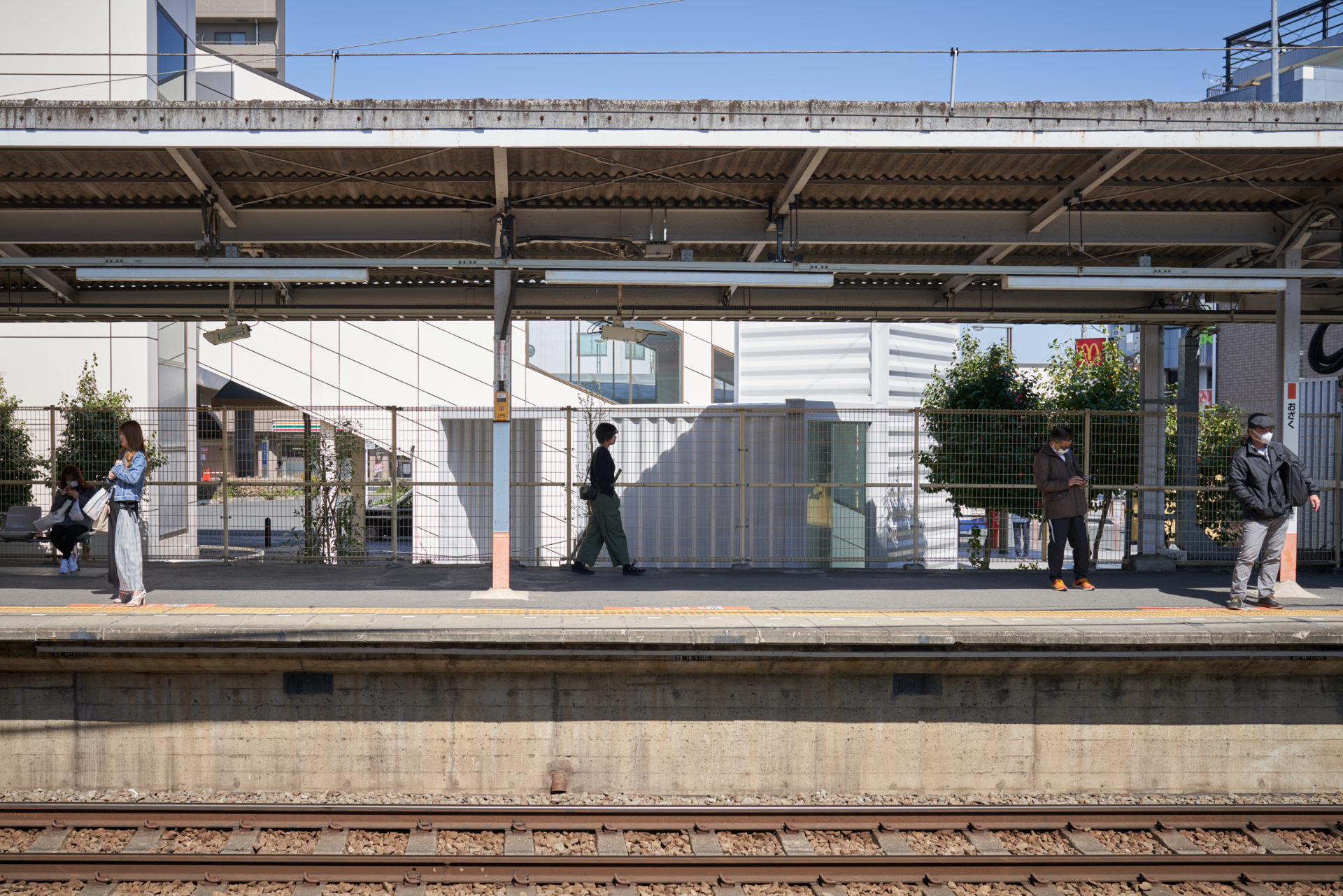
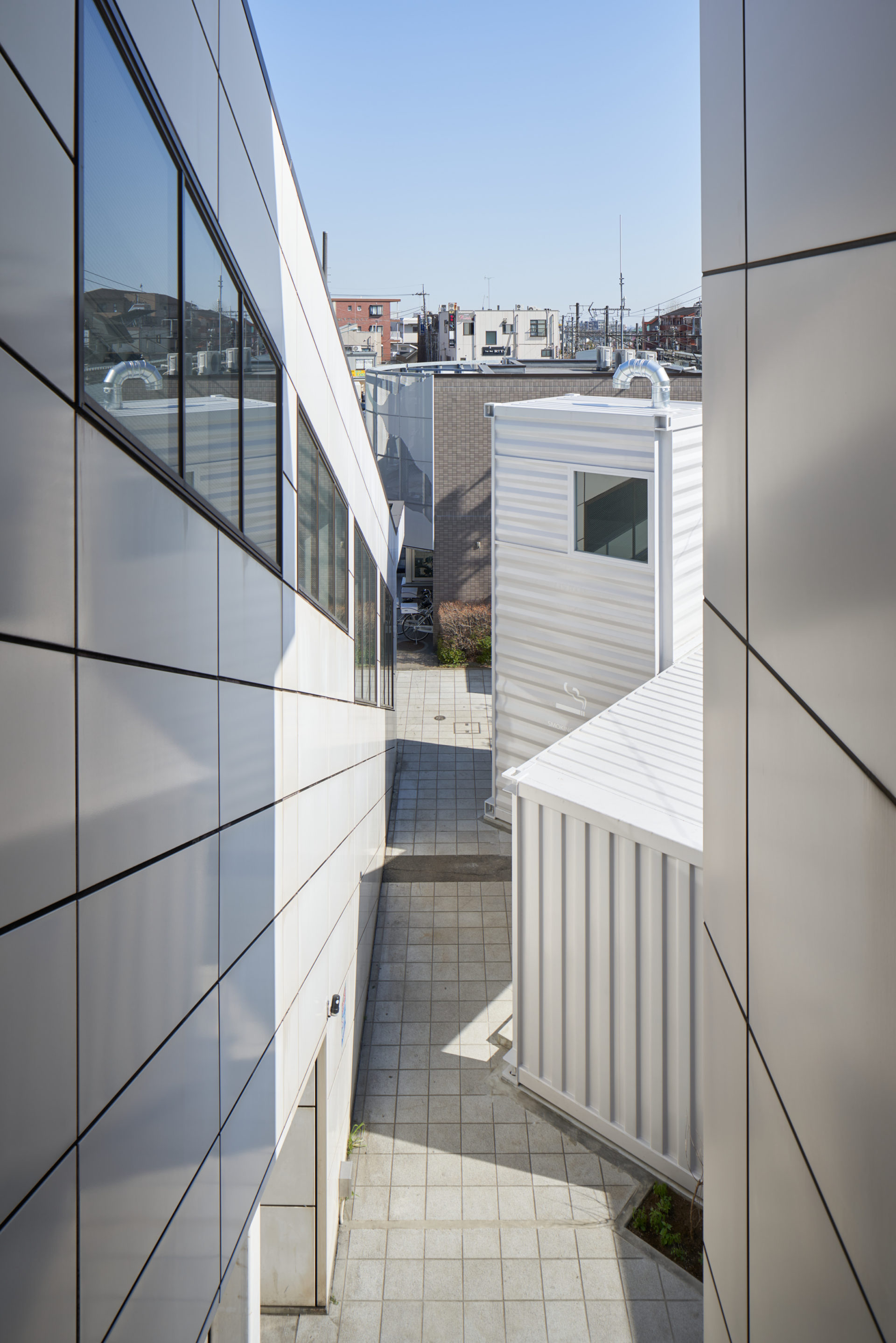

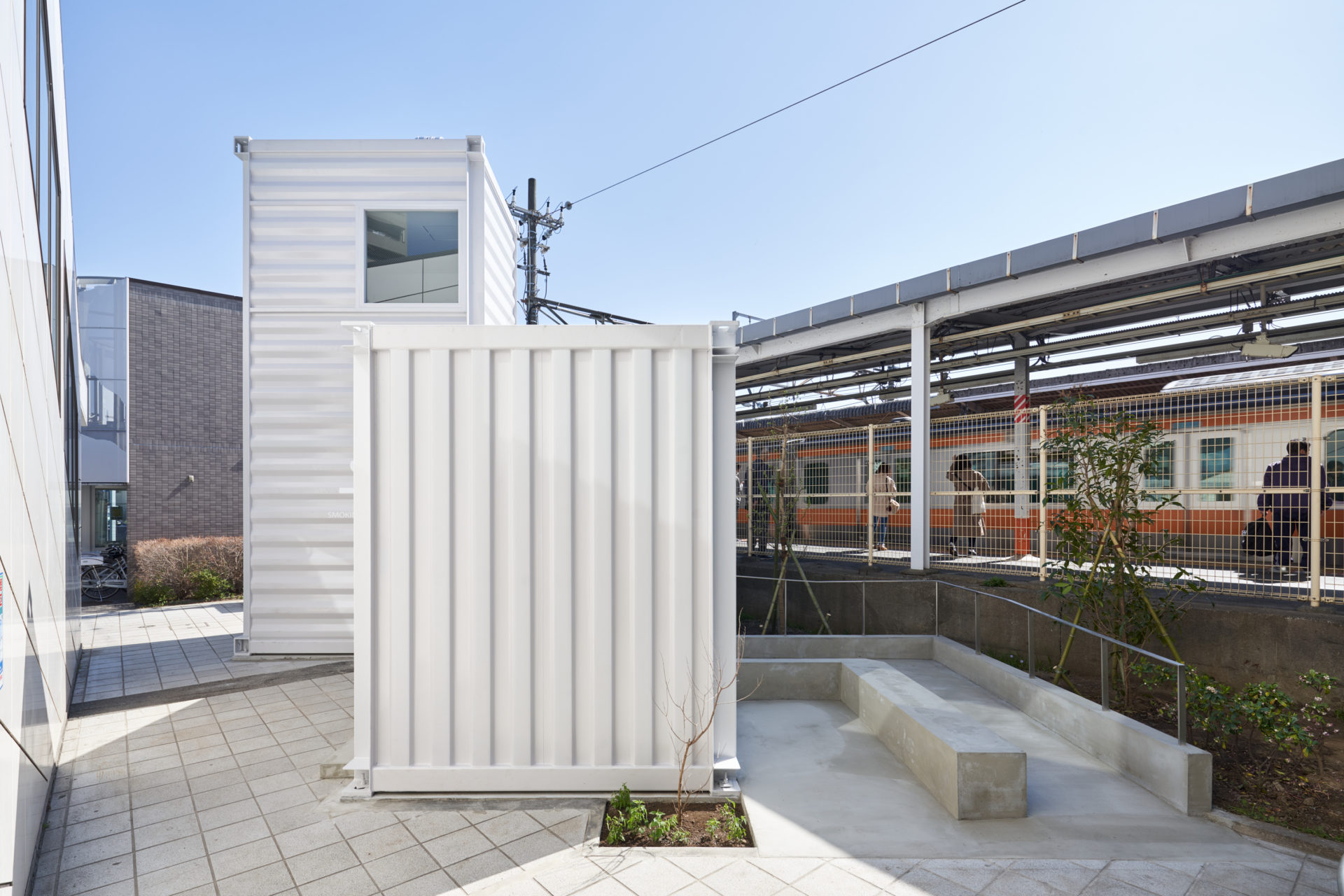
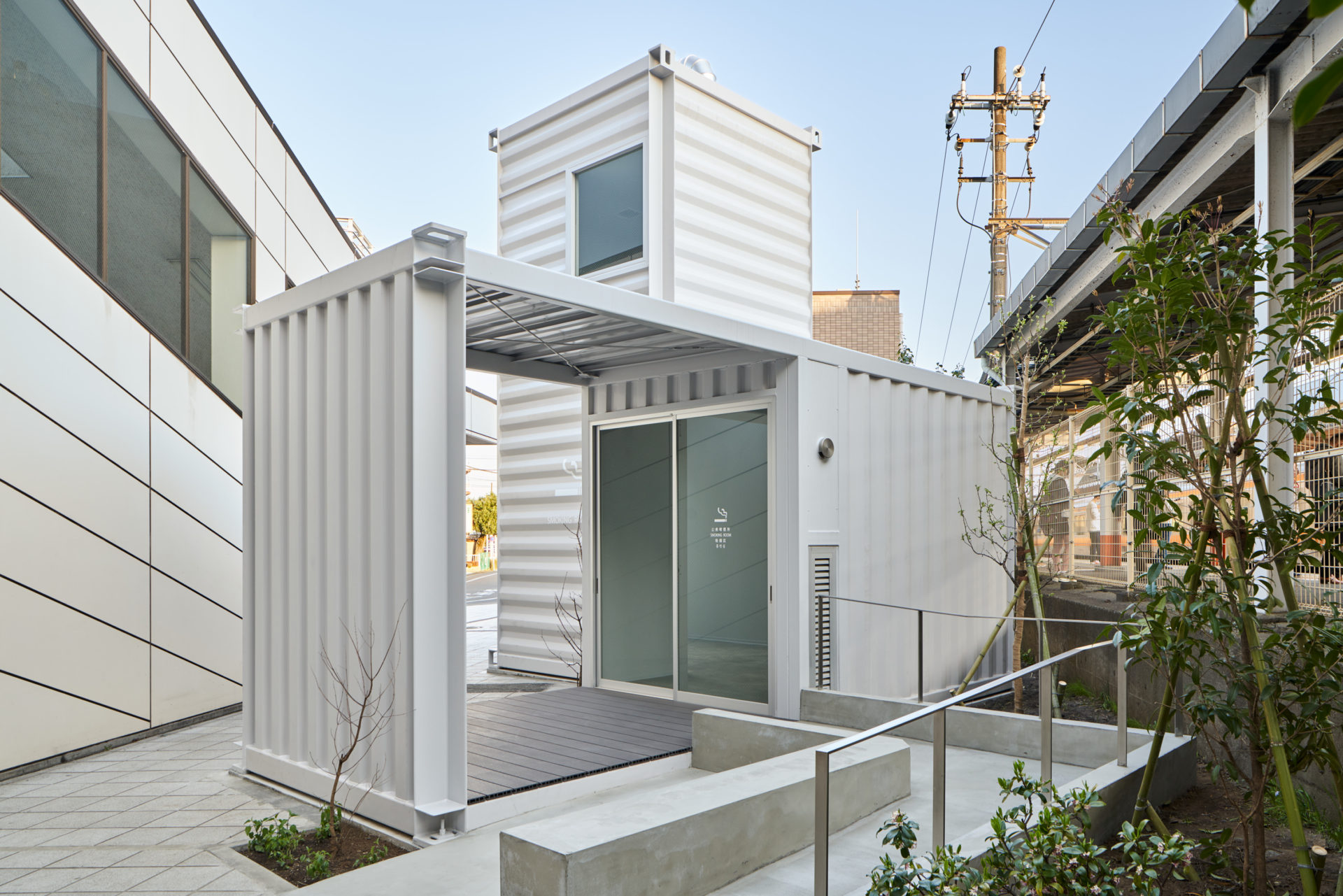
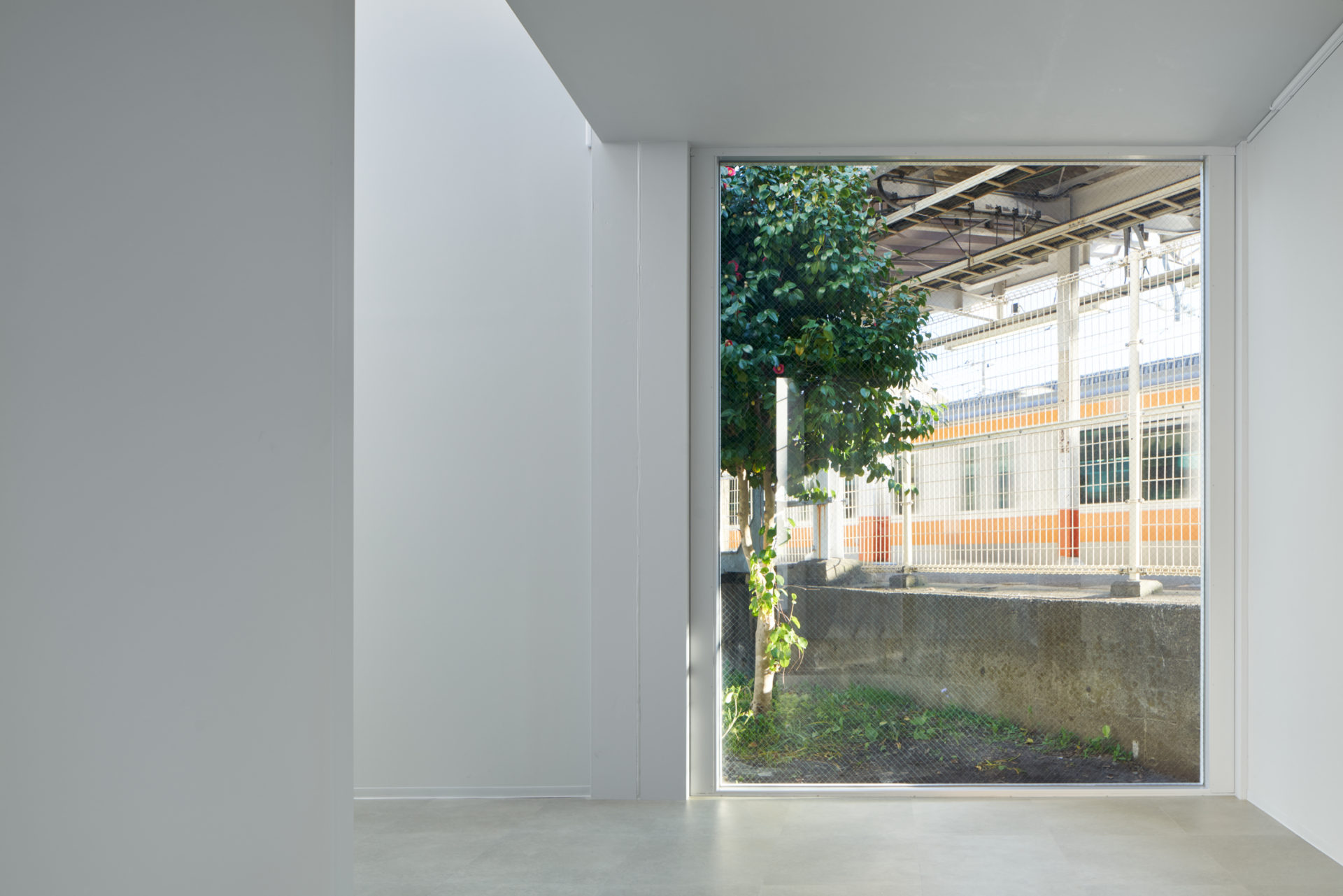
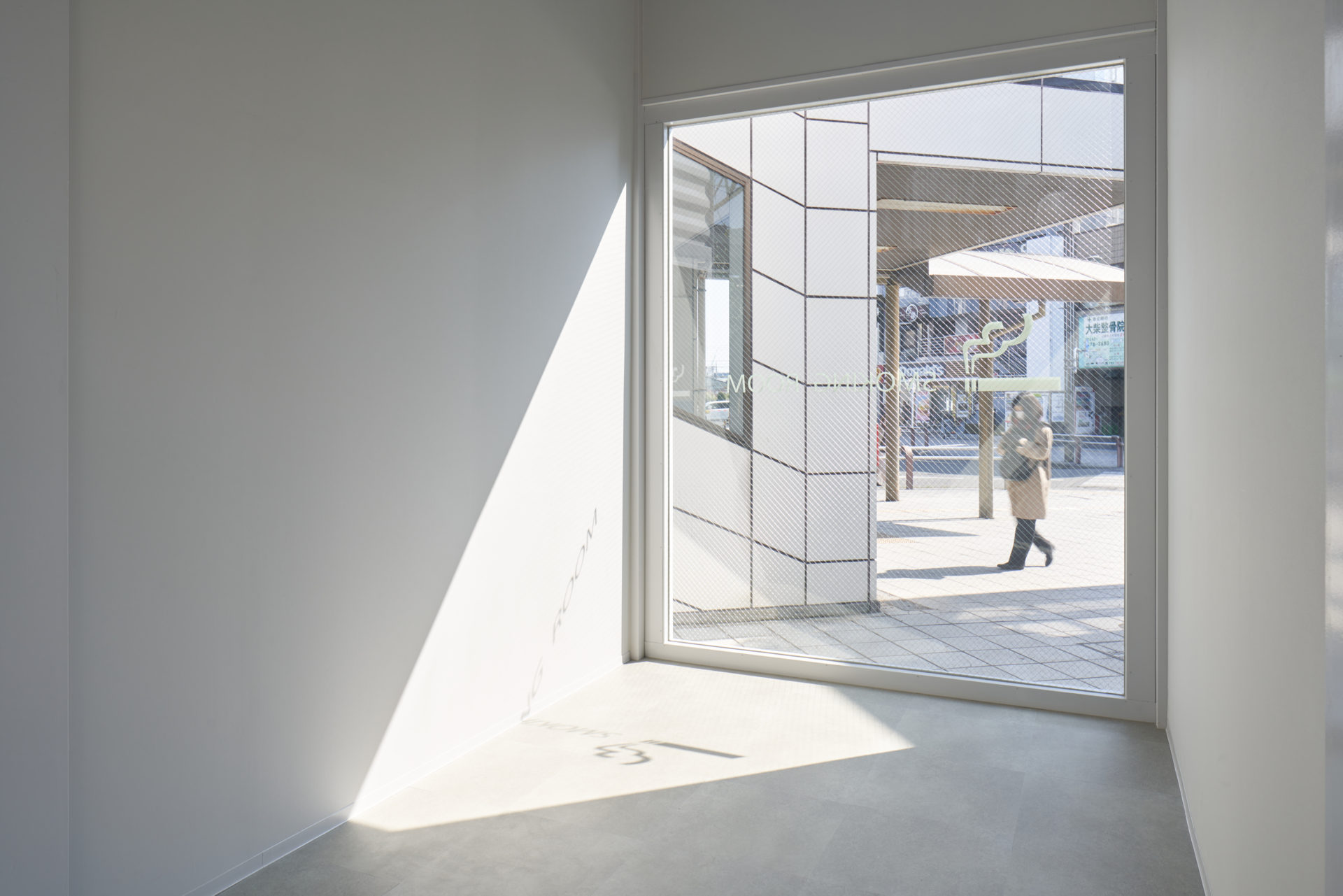

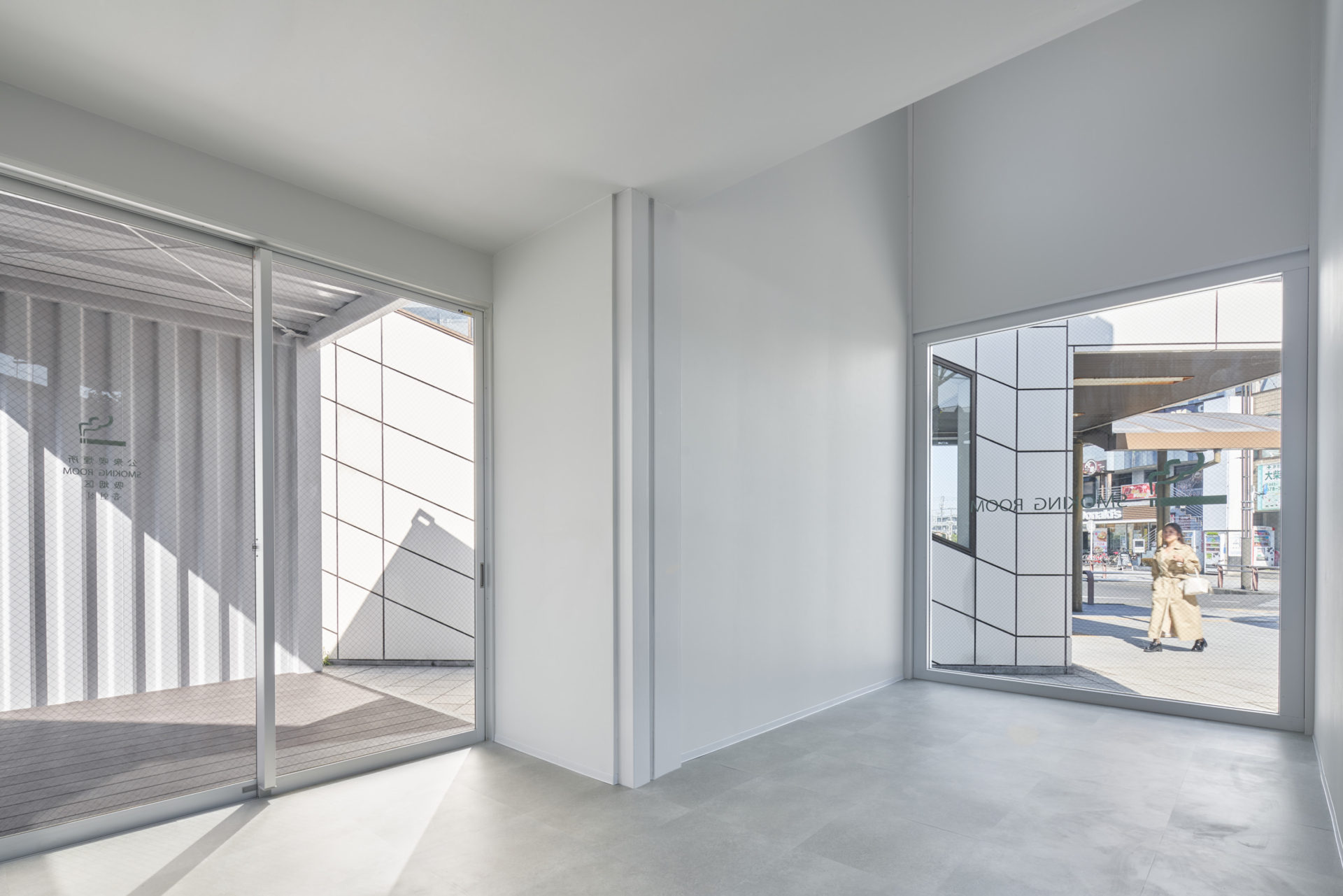
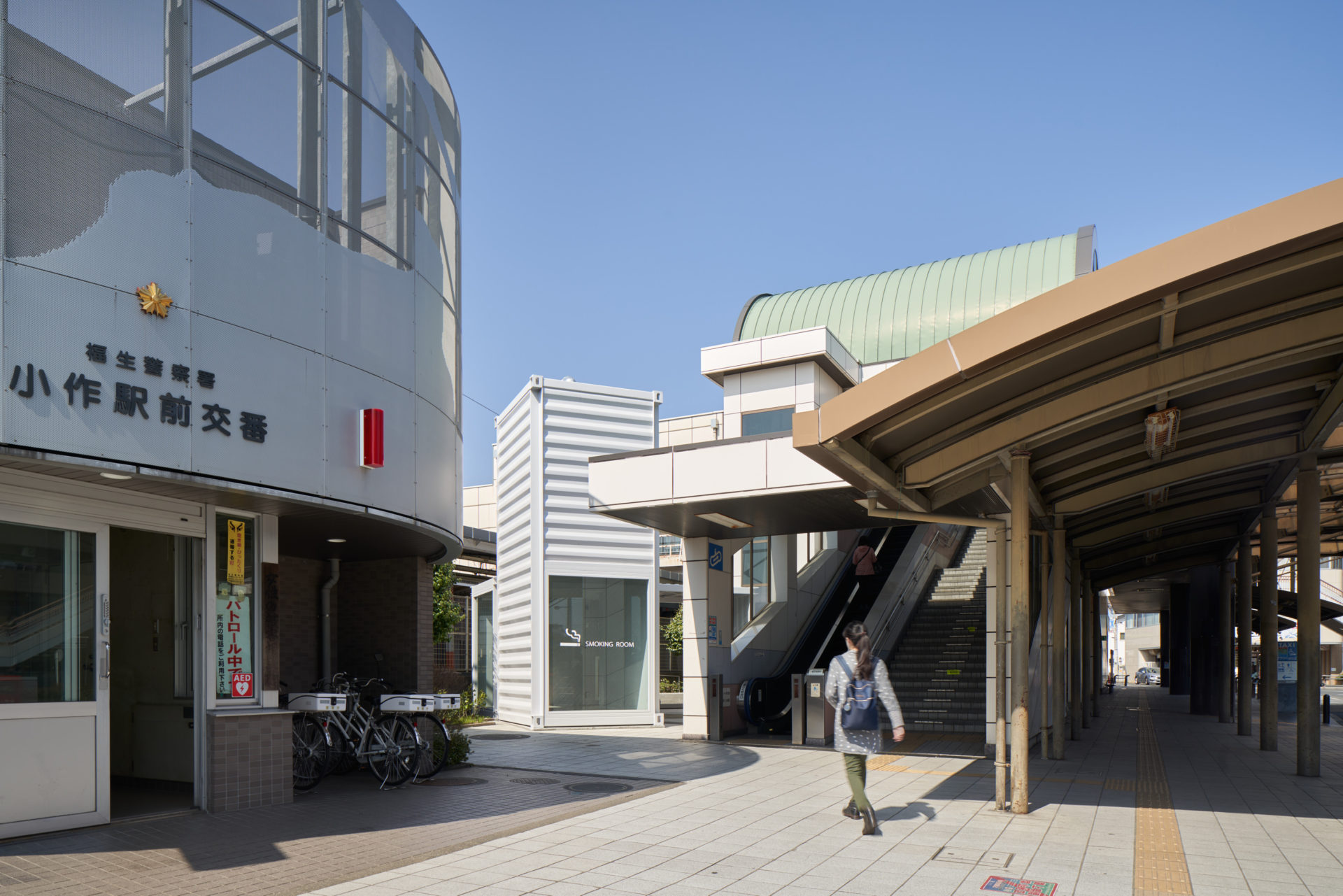
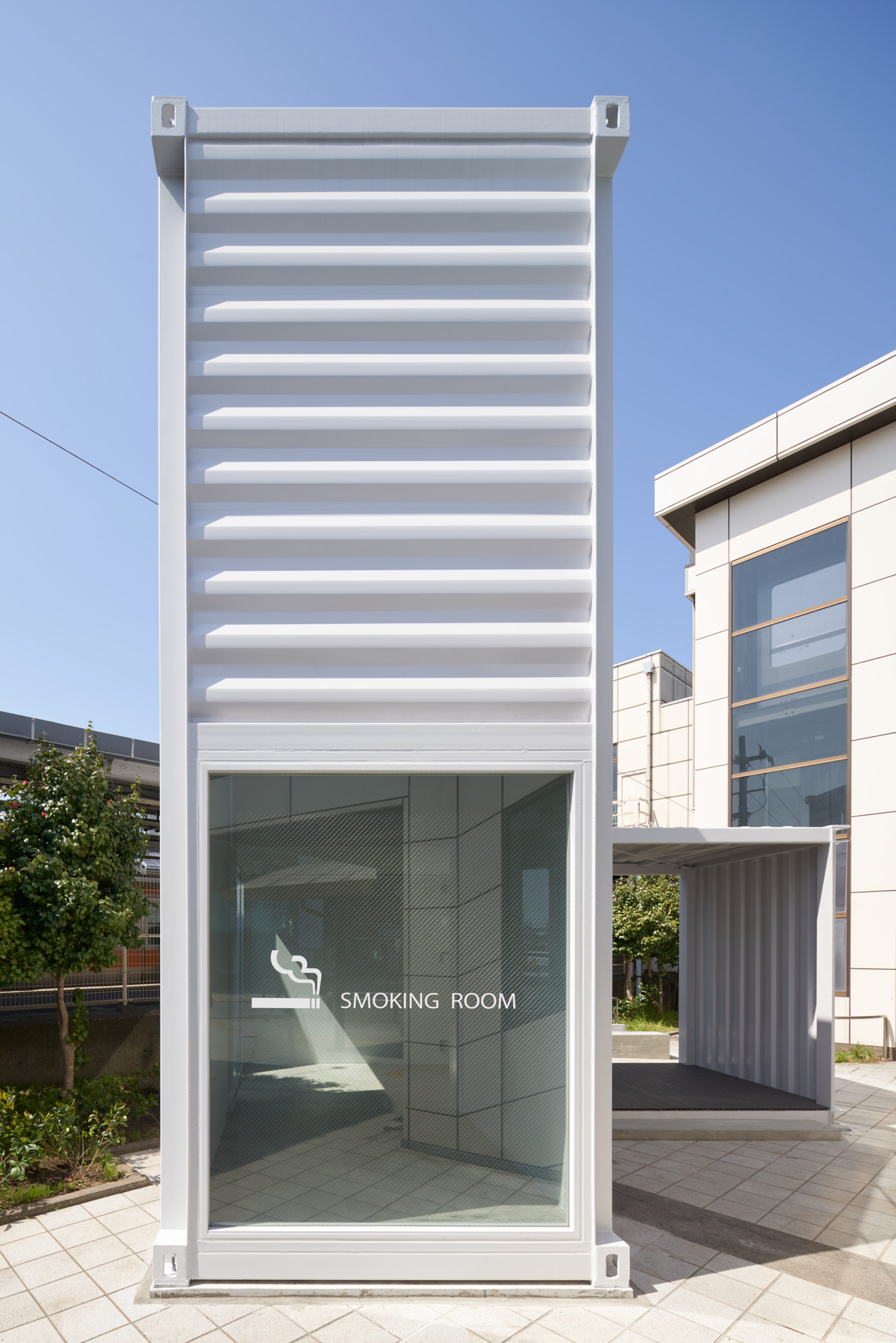
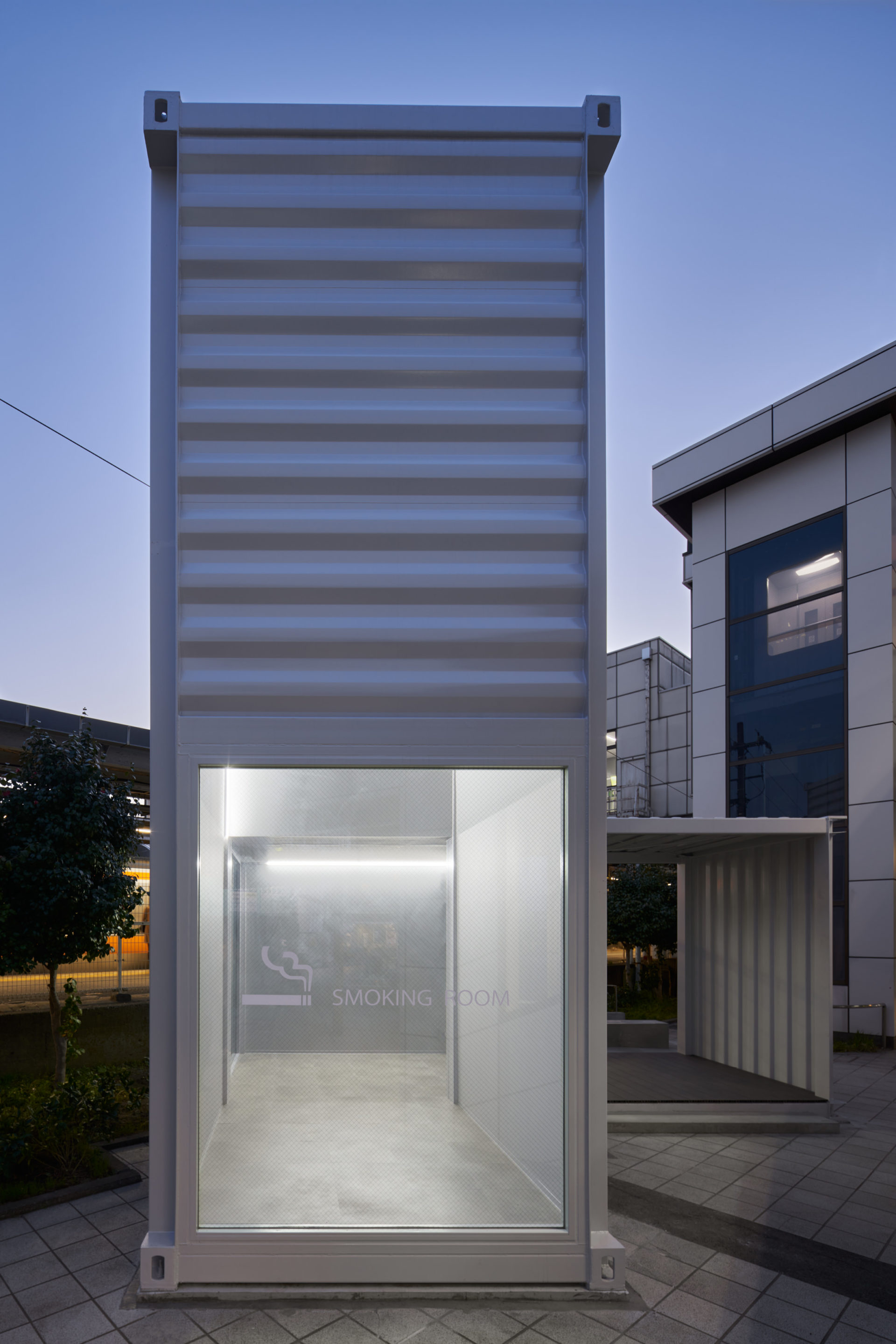

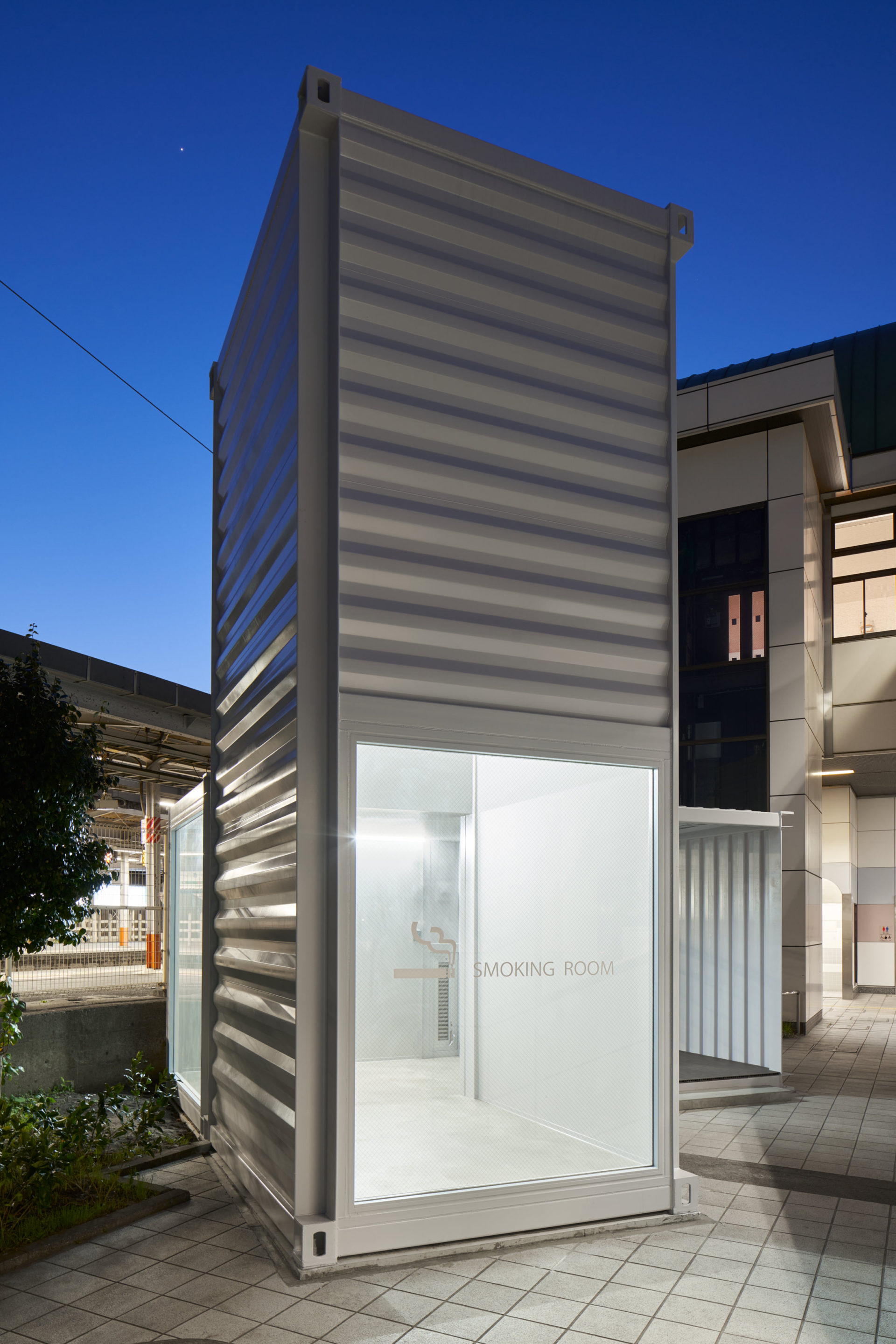
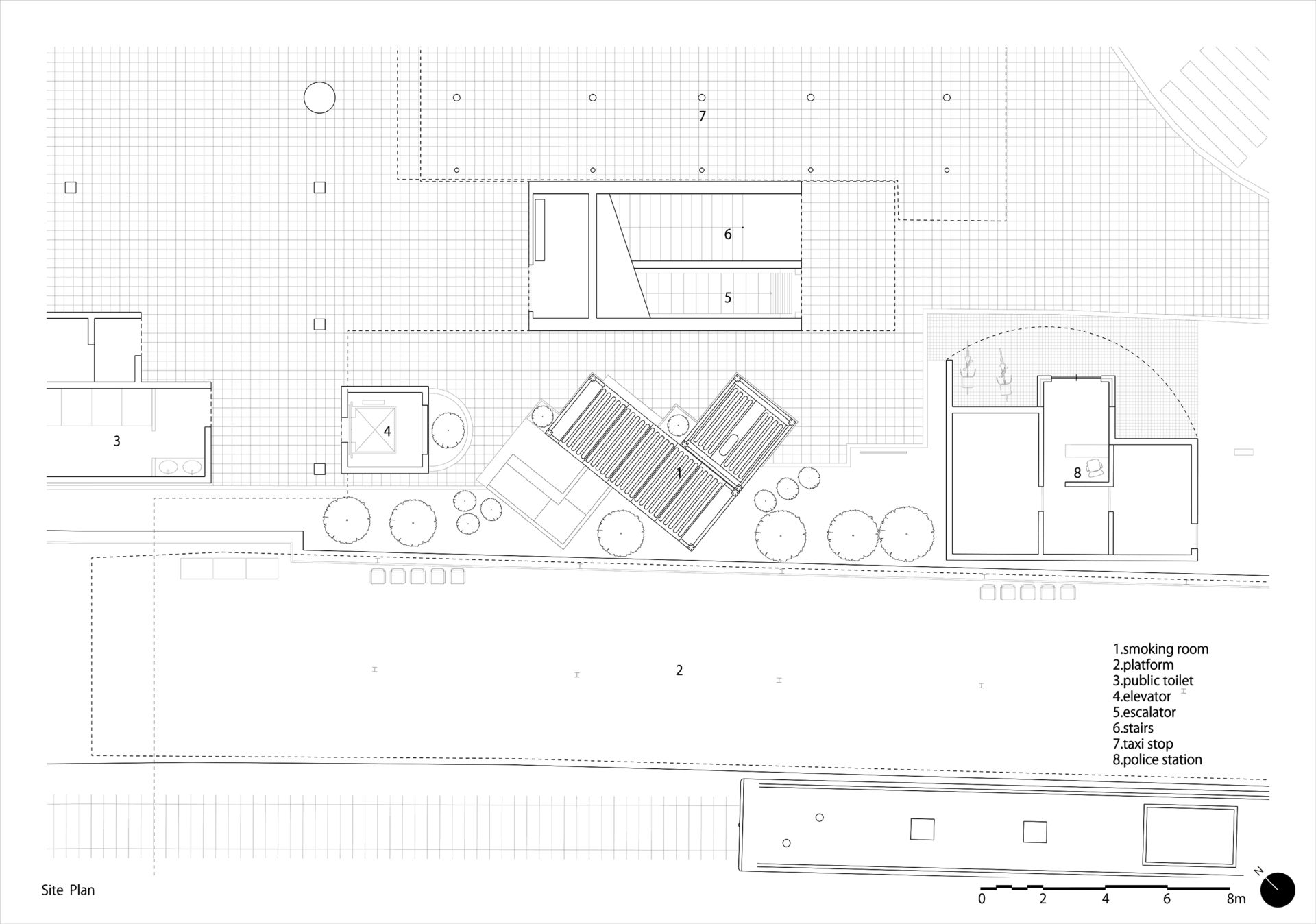
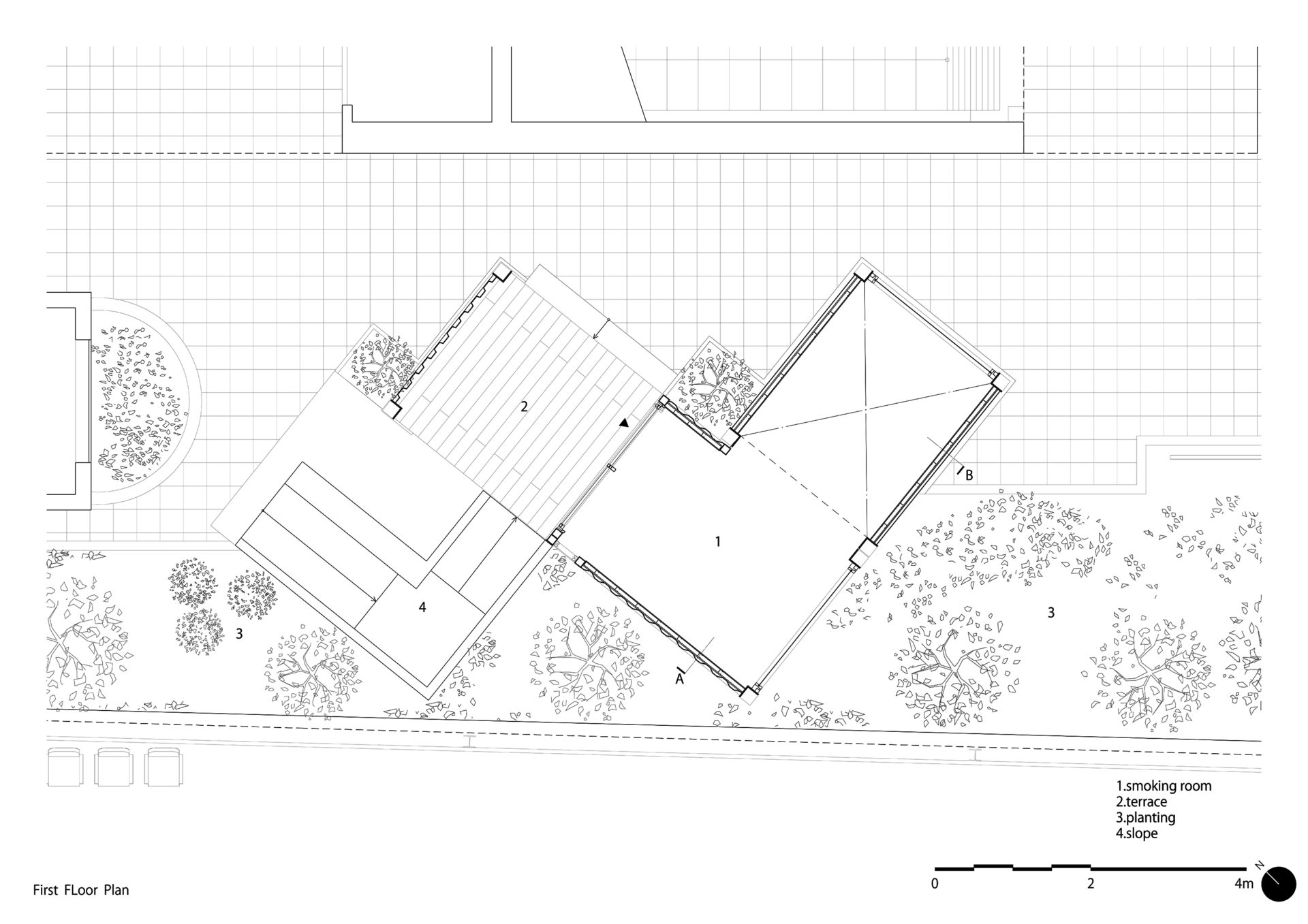
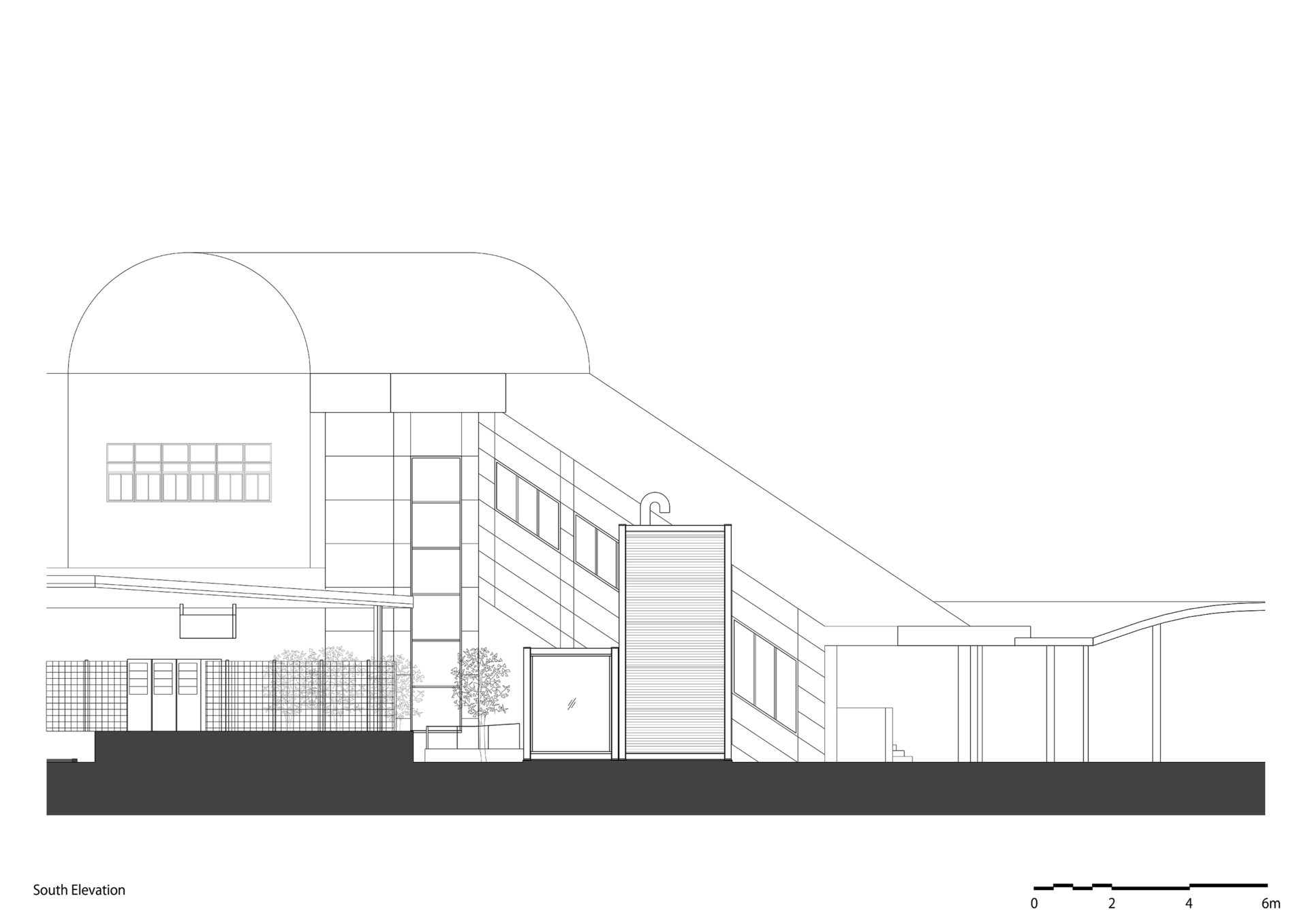
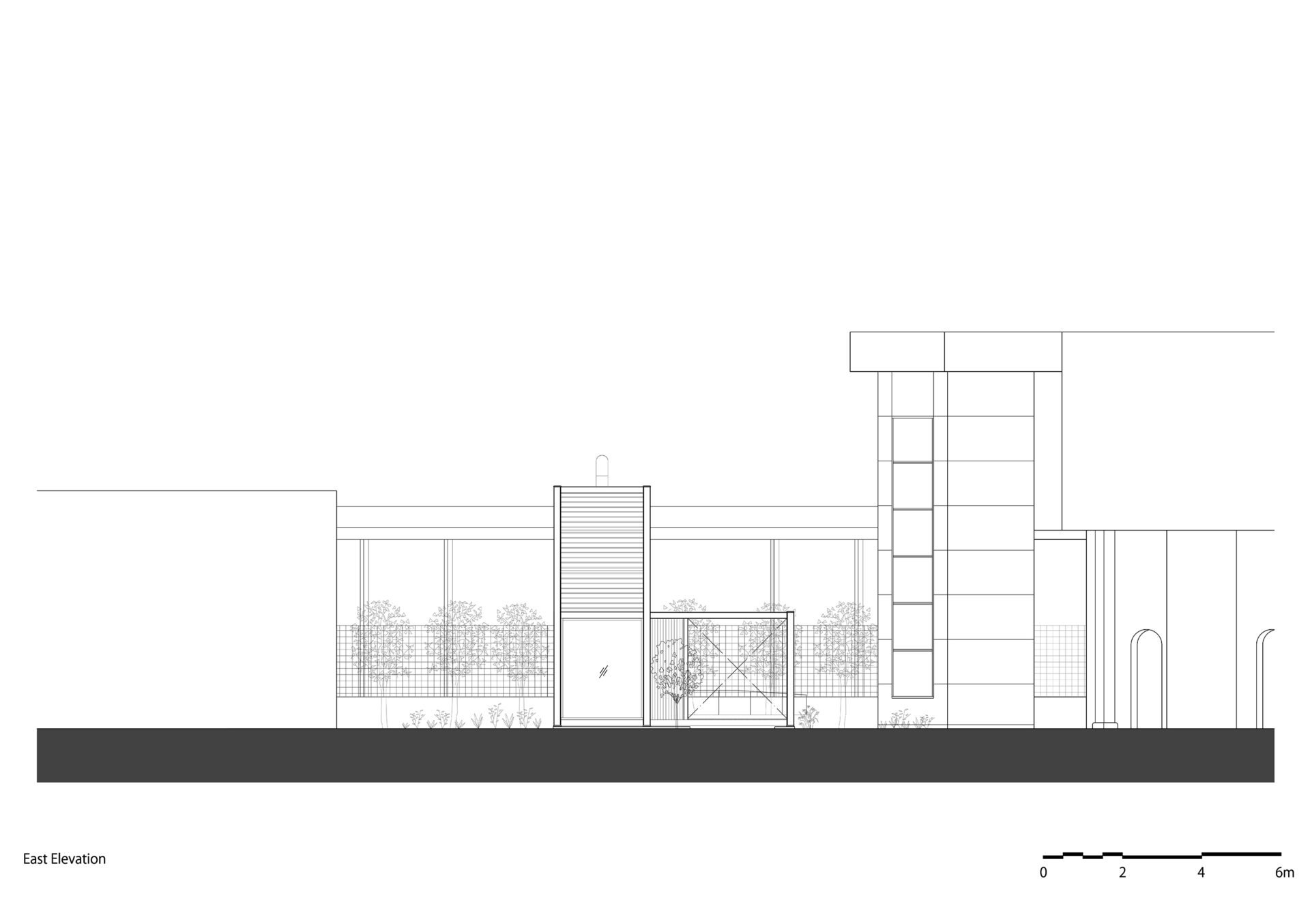
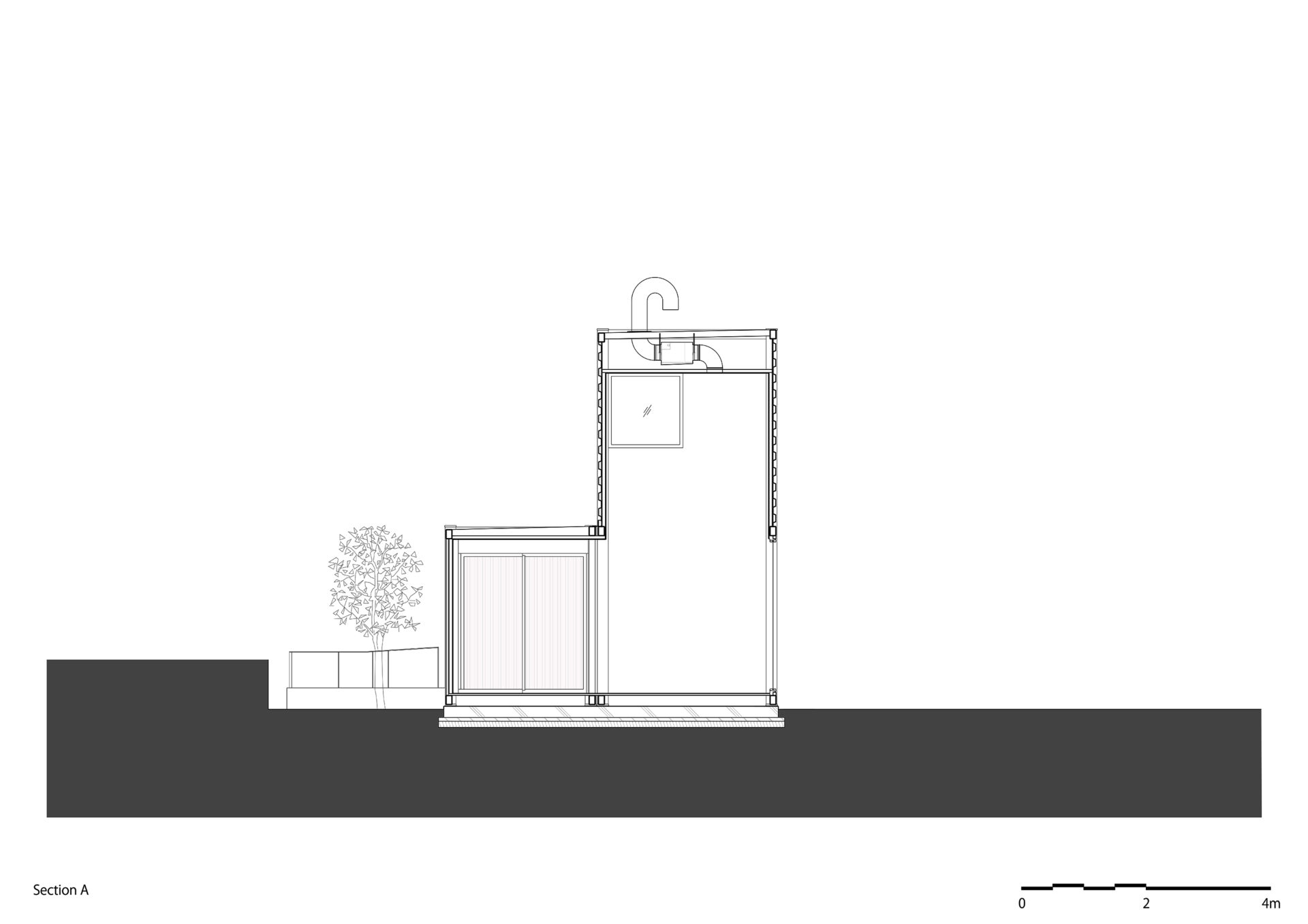
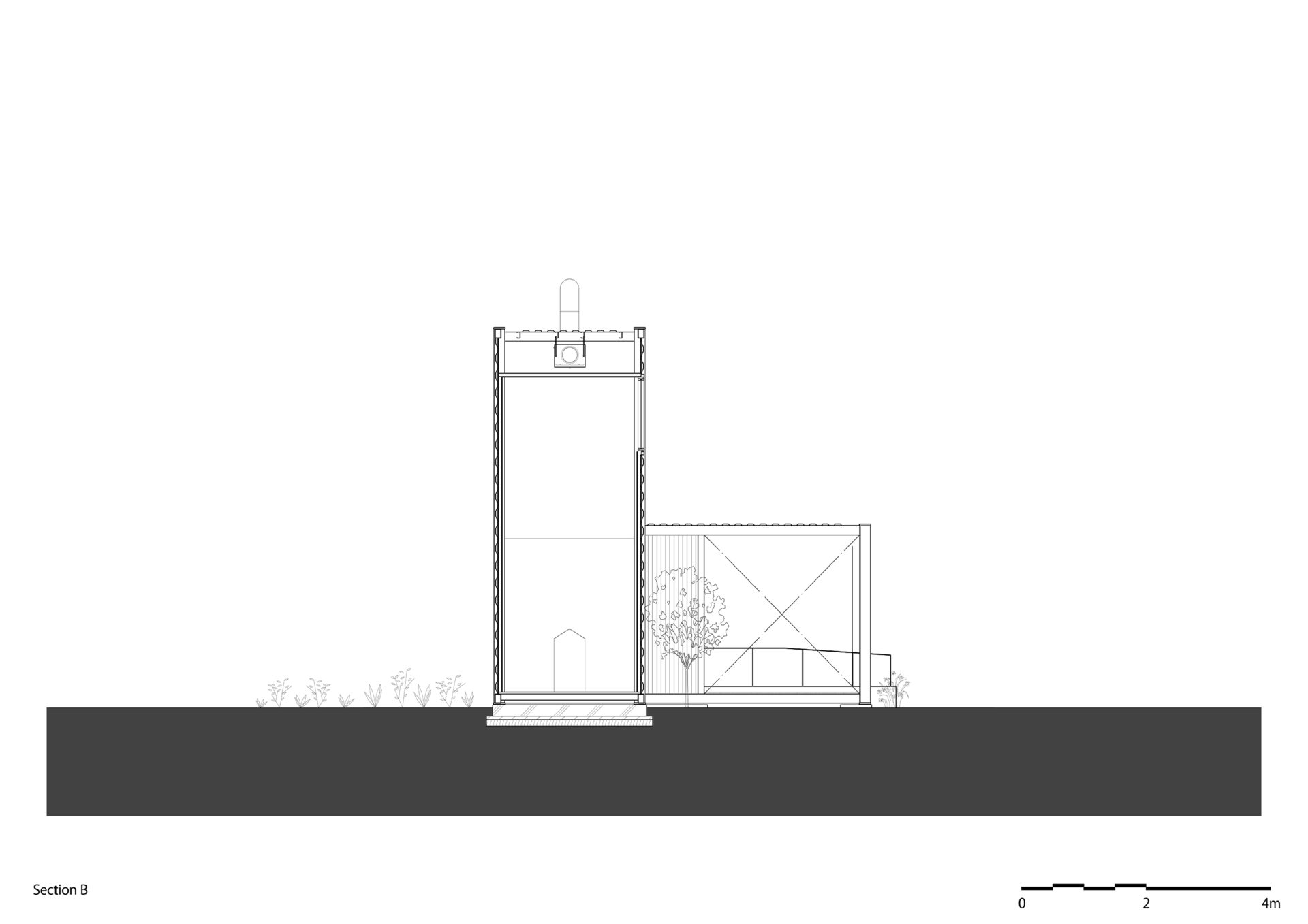
小作駅東口公衆喫煙所
2020 / Category: landscape, public facility
東京都羽村市、JR小作駅前に建つ公衆喫煙所の計画である。2020年4⽉から施⾏される健康増進法の一部改正により屋内の喫煙規制が強化されることを受けて、受動喫煙を防止する屋外喫煙所の設置が求められた。
敷地は小作駅プラットホーム、橋上コンコースに至るエスカレータとエレベータ、駅前交番のあいだに残された空間で、都市計画法上は「道路」となる場所である。ここに2つの海運用20フィートコンテナを、一つは水平に、もう一つは垂直に置き、つなげた。水平に置いたコンテナの半分くらいは外部空間とし、周辺と連続的に使えるようにした。垂直に置いたコンテナ内は天井高5mの吹き抜け空間で、上昇気流によってコンテナ上部から煙を排気することでコストの高い空気清浄機を設置不要としている。
2つのコンテナは周囲の構築物と45°角度を振って雁行するように配置した。それにより、プラットホームへの圧迫感を解消しつつ駅前広場への視線の抜けを確保している。コンテナ壁面の四方に向けて配置された大開口は周囲の日常風景を切り取り、光や風を透過し、来訪者を駅前空間のただなかに置く。
雁行によって生まれたニッチにはいい「香り」のする植栽(キンモクセイ、ジンチョウゲ、クチナシ、カリン、ロウバイ、セイヨウニンジンボク、メードセージ)を植えた。不快な「匂い」の喫煙所のイメージを反転させ、喫煙者にとっても非喫煙者にとっても、全体が自然豊かで居心地のよい公園のような場所になることを目指した。
今、改めて建築の価値を考える
新型コロナウィルスは、シェルターとしての建築内に隔離された人間がインターネットを通じてのみ交流するという理想都市の実現をぐっと近づけたように見える。しかし、ほんとうにそれは私たちが建築や都市に期待してきたことだっただろうか。こちら側とあちら側、自己と他者を区別し、隔離することに建築が加担して良いのだろうか。
改めて考えてみると、喫煙所はそのような「隔離」「区別」「断絶」そのものが目的化された建築タイプと言える。受動喫煙を防止する目的のもと、常に喫煙所は世界の片隅に追いやられてきた。実際、ぼく自身も非喫煙者で嫌煙感情が強い方だ。しかし、いざ喫煙所を設計する機会を与えられると、これまで自分が知らず知らずのうちにこういった排除の構造に加担していたことに気づかされ、世界の、人間の多様性の豊かさを損なう建築にはしたくないと思った。喫煙者と非喫煙者という線引きを直接的に建築化するのではなく、その枠組みを超えた公共性を持った場所をつくりたいと考えた。
もともと公共性の高い場所に、計画的に寸法を与えて「設計」するのでは、どうしても「喫煙」という機能から逃げられない。そこで、海運用コンテナである。運搬時の積載要件によりあらかじめ縦横高さの寸法が決められた鉄のかたまりだ。この、喫煙所というプログラムと一対一対応「していない」よそから持ち込まれた寸法の物体をただ置くことによって、機能を超えて公共に投げ出された空間が生まれるのではないかと考えたのだ。
結果的に、コンテナをななめにずらしながら置いたことも加担し、あいまいな場所がたくさん「出来てしまった」。この場所を小作の人々がどう使っていくのか、楽しみである。駅前に突如あらわれたコンテナが、それ自体シンボリックな物質としてありながらも、周囲の構築物と連坦して、人々が彷徨い、佇み、不要不急の交流をするためのよりどころとなることを期待している。
主要用途: 公衆喫煙所
規模: 19.8㎡
住所: 東京都羽村市
設計担当:雨宮知彦、細谷悠太、小川修平
構造設計者:鈴木啓/ASA
ランドスケープ:山崎誠子/GA Yamazaki
写真家:若林勇人
Smoking Box in Tokyo
2020 / Category: landscape, public facility
A small smoking space combining two shipping containers appeared in front of a railway station in Tokyo, reflecting the increasing need for isolated smoking spaces for the purpose of preventing second-hand smoke.
The site is the space left between the station platform, the escalator and elevator to the station, and the police box. We put two 20-foot shipping containers here, one horizontally and one vertically. About half of the horizontally placed container is external space so that they can be used continuously with the surrounding area. The vertically placed container has a 5 meters high ceiling space, and the rising airflow exhausts smoke from the upper part of the container, reducing the cost for the air cleaner machine.
The two containers are arranged diagonally to reduce the pressure on surrounding people. Large windows frame the surrounding daily landscape, allow light and wind pass by, and place visitors in the midst of the ordinary scenery around the station.
A good "scent" planting (Orange osmanthus, Daphne odora, Gardenia, Chinese quince, Meratia praecox, Agnus castus, Brazilian sage) was planted in the niches created by the diagonal arrangement. By reversing the unpleasant image of "smelly" smoking area, we aimed to create a comfortable place for both smokers and non-smokers as like a natural park.
Towards inclusive architecture again
COVID-19 seems to have brought the realization of an ideal “Smart City” in which humans isolated in the shelter interact only through the Internet. But was that really what we expected of architecture and cities? Should architecture optimistically take part in separating this side and that side, or the self and others?
Thinking again, it can be said that "Smoking Space" is the typical building type whose purpose is "isolation" or "disconnection". With the aim of preventing second-hand smoke, smoking areas have always been forced into corners of the world, and actually I myself, as a non-smoker, have hated smokers. However, given the opportunity to design a smoking space, I realized that I had been unknowingly involved in this structure of “exclusion”. Then we thought this project should not be an architecture that deny the richness of the diversity of the world.
How can we avoid such exclusive architecture? As long as we “design” by giving a proper scale and proportion to the smoking behavior, we will never escape from “function”-oriented architecture. Rather, we decided to use “shipping container”, which is a steel object whose vertical and horizontal height dimensions are predetermined according to the loading requirements during transportation. We thought that just placing a steel object of a size determined from another logic would create a space that was thrown into the public beyond the function.
As a result, a lot of undefined places was “created”, together with the arrangement of the containers out of alignment. How will people discover and use this place? We hope that the shipping containers that suddenly appear in public space will serve long time as a place for strolling, relaxing, and having unnecessary communications.